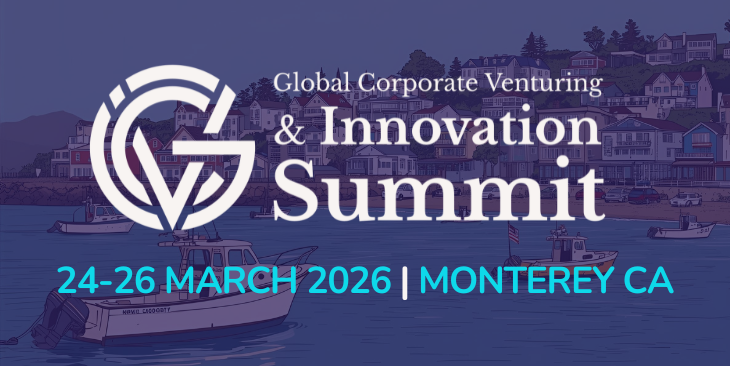Christine Gulbranson, chief innovation officer of University of California, outlines the changes her institution has enacted to support the innovation ecosystem.
After two and a half years in the job, I am still in love with what University of California (UC) entrepreneurs are doing, I am still amazed by the people in UC’s ecosystem, and I am still convinced that we at UC have a long way to go in developing university innovation. I am proud to say that we are leading global university efforts in innovation and are well recognised around the world for changing the concept of university innovation.
Redefining university innovation
For many, university innovation means technology transfer – taking technology, processes or ideas developed within the university by researchers or faculty and transferring them to industry and the commercial world. Sometimes this takes the form of startups formed by those conducting the research, and other times intellectual property (IP) that is discovered and developed is licensed to existing companies in industry. Most universities have some sort of tech transfer office, tech commercialisation office, patent office or innovation office that serves as a touch point with industry and manages university IP.
Funds and investments focus on getting “tech transfer” startups up and running. Thus far, most startups founded by students and alumni have not been considered part of a university’s innovation. UC is redefining what university innovation means, taking a holistic view of startups and the innovation process, no matter where ideas and startups originate, and shifting to an active relationship with industry for university IP.
The new approach to university innovation is that of an ecosystem for all university members and one that UC has been implementing for the last couple of years. Internally, we look to serve students, alumni, and faculty and staff. We are asking who is part of the university ecosystem and who is offering and capturing value in the marketplace. Clearly, the answer is not just tech transfer startups. We are also creating a new vision for university innovation – vision is so important when you are developing an ecosystem and infrastructure. You need to know where you are going, why, what your goals are and who you are serving.
At UC, we envision a coordinated, cohesive unit for the betterment of the UC system, creating stronger partnerships between University of California and industry. We want industry to look to UC as leaders among universities in industry partnerships and innovative models to support entrepreneurs. We want UC leaders to recognise and reward innovation and entrepreneurial activities from faculty through merit and promotion. We want UC to attract talent and entrepreneurs-to-be not just because we have good infrastructure supporting startups and technology commercialisation, but because we have a culture that is future-focused and collaborative.
The goal of creating an innovation ecosystem for the entire University of California is to accelerate startup formation and traction, increase tech commercialisation through culture and incentives, aggregate siloed operations, encourage and foster business formation from researchers, students and alumni, and positively impact regional economies – California, the nation and the world. We have set high goals as we should – we are in the 21st century where innovation happens faster, collaboration is key, and industry considers partnerships and acquisitions as part of their innovation strategy.
Innovation infrastructure
Over the past few years, University of California has invested in infrastructure to forward our innovation goals. We have put significant resources into funding and an investment fund, knowing that financial capital is one of the major barriers to startup formation. We formed UC Ventures through Bow Capital and launched a $250m venture fund. While the fund is separate from UC and currently managed by UC’s chief investment officer, its purpose is to fuel a large percentage of its investments in startups powered by UC research.
Thanks to government funding – through California state assembly bill AB2664 – to further innovation within the UC system, we have also invested in proof-of-concept (POC) funds, including funds given directly from our central office rather than by campus. These have been instrumental in furthering research that can be commercialised and were well received by faculty and researchers across our campuses. Following on from POC funds, there are several pre-seed and seed funds across the UC system, such as the Trione Student Venture fund, a small grant of $5,000 to companies in pre-seed and seed stages.
In addition to funding, we have also invested in labs and physical spaces. We want startups in all industries and verticals to have a means of accessing physical space and facilities required to further their venture. While incubators and accelerators in office-style environments work well for companies that are digital, we identified holes in our ecosystem for companies in the biotech space, so we invested in partnerships for lab access and also labs, such as the wet lab at the Startup Sandbox at UC Santa Cruz or the UC Merced Venture Lab. Tied to this, we have invested in vertical-specific space and programs such as Cyclotron Road. Thanks to AB2664 funding from the state government, we now have at least one incubator or accelerator on each UC campus. Hundreds of startups go through our incubator and accelerator programs each year, and thousands more apply.
Having worked on our physical infrastructure, we are also working on our non-physical infrastructure, particularly knowledge management, IP management and people management. UC has a huge collection of patents and intellectual property currently managed by our patent team at our central office as well as through campus tech transfer offices. Together, we foster partnership for research collaboration with industry, government and other universities.
Industry has a growing interest in university partnerships and tapping into the deep talent we have, so we are working on talent mapping to boost industry consulting. We have also realised that having a huge IP database is a great resource that could be put to better use, so likewise, we are mapping our IP, using the artificial intelligence-driven analytics tool offered by the company ClearAccessIP and increasing its use and distribution to industry.
Part of developing an ecosystem means developing relationships. Founders appreciate talking to fellow founders and having mentors. Incubator and accelerator programs are good vehicles for fostering these kinds of relationships. But relationships are important during the steps before becoming a founder, developing your technology, IP, process or product. In line with UC’s goal to impact society positively, we focused on unifying researchers focused on drug development and curing diseases.
UC Braid was founded in 2010 and has since been a great vehicle for fostering connections and collaborations among UC faculty. The D4 workgroup came out of Braid, as did the Drug Discovery Consortium. Cersi, a collaboration with Stanford and US regulator the Food and Drug Administration to fast-track drug development and approval, was also formed to improve the development and approval of effective medical products. Braid and its related programs have been instrumental in removing barriers and sharing knowledge among researchers to help foster drug discovery and development.
Along similar lines, we have focused on connecting people and opening access to resources to foster startup formation and business development. It is one thing to discover a drug that cures a disease, but it is another to take it to market. We are working on boosting business and entrepreneurship knowledge, fostering industry connections and helping startups overcome legal issues such as entity formation.
Finally, as we begin to touch on fostering growth, not just go-to-market stages, we have recently opened an innovation and entrepreneurship satellite office in Beijing. Given the size of the Chinese market and the knowledge required to enter the market, we are making it easier for companies to grow beyond the US market.
A living ecosystem
We have come a long way in developing a better infrastructure to foster innovation within the UC ecosystem. However, we still have more work to do. Our ecosystem is not just about infrastructure, it is an ecosystem that lives and breathes. We want to develop an attitude toward innovation and entrepreneurship on all of our campuses and within all our fields of speciality such that innovation and entrepreneurship are rewarded, even as academics.
It is tough finding a reward structure that encourages exploration, not just exploitation, that rewards failure but not too much, and that encourages time spent on commercialisation, not just time spent on research publication. It is part of our mission to ensure that research that can be commercialised for the betterment of society happens. At the end of the day, we want UC to be an ecosystem that people want to be a part of, where the whole is greater than the sum of the parts, and where the world recognises a new approach to innovation that is positively impacting societies and economies globally.
I am confident that University of California has come a long way in leading changes in global approaches to university innovation and I know that we are not done yet. I am excited for 2019 and look forward to sharing additional progress, updates and advances not just from our office, but from the thousands of startups we are proud to count as part of the UC ecosystem.
– This article first appeared on LinkedIn. It has been republished with permission from the author.








